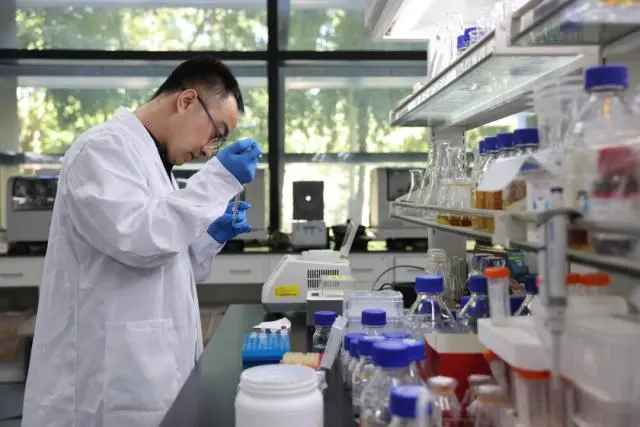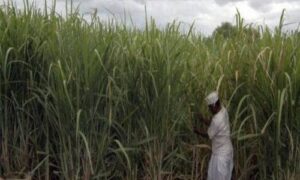Chinese scientists synthesize sugar from carbon dioxide

Chinese scientists recently achieved precise total synthesis of sugar from carbon dioxide in the laboratory, marking a crucial step in artificial sugar synthesis.
The synthesis, which took more than two years to realize, was achieved by teams from the Chinese Academy of Sciences’ Tianjin Institute of Industrial Biotechnology and the academy’s Dalian Institute of Chemical Physics.
Their research was published last week in a paper in Chinese Science Bulletin, a multidisciplinary academic journal.
Sugar is a major source of energy for the human body and a key raw material for industrial fermentation, and it is mainly obtained by extracting it from crops such as sugar cane.
However, the traditional method of extraction is limited by the energy conversion efficiency of plant photosynthesis. Moreover, the process of extracting sugar has been affected by uncertain raw material supplies due to land degradation and shortages, ecosystem degradation and extreme weather and natural disasters caused by global warming.
As a result, artificial sugar synthesis has been assiduously studied by the scientific community in recent years, and scientists around the world have contributed to the effort.
In their latest research, the Chinese scientists adjusted high-concentration carbon dioxide and other raw materials in the reaction solution in accordance with certain proportions. With the help of chemical catalysts and enzyme catalysts, they obtained four kinds of sugars: glucose, allulose, tagatose and mannose.
The experiment lasted about 17 hours, much shorter than the time required for traditional methods of sugar extraction, according to Yang Jiangang, lead author of the paper and associate researcher at the Tianjin institute.
The efficiency of sugar synthesis in this study was 0.67 grams per liter per hour, which was more than 10 times higher than the previous results achieved by scientists worldwide.
Yang said that the carbon dioxide to sugar conversion rate of glucose reached 59.8 nanomoles of carbon per milligram of catalyst per minute. This is the highest level of artificial sugar production known domestically and internationally.
The study also achieved precise control of artificial sugar synthesis.
“By controlling the varied catalytic effects of different enzymes, theoretically almost any type of sugar can be synthesized,” Yang said.
Regarding the study, Manfred Reetz, a member of the German National Academy of Sciences Leopoldina, said it is a particularly challenging task to convert carbon dioxide into sugars.
Door for green chemistry
The achievement by Chinese scientists has provided a flexible, multifunctional and efficient sugar synthesis route, which opens a door for green chemistry, Reetz said.
Green chemistry, similar to sustainable chemistry, is a burgeoning field that focuses on how to fully utilize raw materials and energy in the process of producing the intended product while minimizing or eliminating the use and generation of harmful substances.
Carbon dioxide to sugar conversion is seen as an example of green chemistry, since it was conducted under normal temperature and pressure conditions and did not yield any harmful substances.
Source Link: http://global.chinadaily.com.cn/a/202308/24/WS64e697a9a31035260b81de21.html














